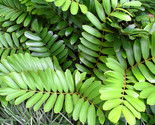10 Seeds Cardboard Palm Cycad Zamia Furfuracea
Shipping options
Seller handling time is 2-14 business days Details
This reflects the seller's handling time and may not include time spent in transit.
If you have questions about shipping, please contact the seller.
FREE via to United States
Return policy
None: All purchases final
Payment options
PayPal accepted
PayPal Credit accepted
Venmo accepted
PayPal, MasterCard, Visa, Discover, and American Express accepted
Maestro accepted
Amazon Pay accepted
Nuvei accepted
Shipping options
Seller handling time is 2-14 business days Details
This reflects the seller's handling time and may not include time spent in transit.
If you have questions about shipping, please contact the seller.
FREE via to United States
Return policy
None: All purchases final
Payment options
PayPal accepted
PayPal Credit accepted
Venmo accepted
PayPal, MasterCard, Visa, Discover, and American Express accepted
Maestro accepted
Amazon Pay accepted
Nuvei accepted
Item traits
| Category: |
Seeds & Bulbs
|
| Quantity Available: |
10 in stock
|
| Condition: |
New
|
| UPC: |
Does Not Apply
|
| USDA Hardiness Zone: |
10 (30 to 40 °F), 11 (40 to 50 °F), 8 (10 to 20 °F), 9 (20 to 30 °F)
|
| Brand: |
Unbranded
|
Listing details
|
Seller policies:
|
View seller policies
|
|
Shipping discount:
|
Seller pays shipping for this item.
|
|
Posted for sale:
|
More than a week ago
|
|
Item number:
|
868785995
|
10 Seeds Cardboard Palm Cycad Zamia Furfuracea
Zamia furfuracea is a cycad native to Mexico in a small mountain range in central Veracruz. It has long fronds which arch from a central crown. The fronds carry tightly packed leaflets which give the plant a fern-like appearance. The thick leathery leaves are pinnate and have wide oval leaflets. They are slightly fuzzy and feel a little like cardboard when rubbed. The circular crowns of leaves resemble fern or palm fronds. The plant has a short, sometimes subterranean trunk up to 20cm (8 inch) broad and high. This plant produces a rusty-brown cone in the center of the female plant. The egg-shaped female cones and smaller male cone clusters are produced on separate plants. Even very young plants produce these interestingly shaped cones. When ripe, the female cone breaks to reveal an array of tightly packed, bright red seeds. In temperate regions it is commonly grown as a houseplant and, in subtropical areas, as a landscape plant outdoors. It is an easy to grow plant, but has a slow growth rate. This species grows in areas varying from generally arid thorn scrub to sandy soils and in limestone sea cliffs. Specimens can be grown indoors in shallow containers. In this way, the partially exposed trunk (tuberous stem) and the airy crown of leaves create an attractive bonsai specimen. It is use for border, mass planting, container or above-ground planter, in mixed foundation plantings or in perennial beds. This cycad is salt resistant and can be used in beachside plantings.
The seeds were collected from groups of female and male plants in Central Florida. There were numerous cycad seedlings near the plants so the seeds have been pollinated and are viable. The seeds can have a good rate of germination if they are grown in moist, well-drained, sandy soil, in an area in full sun and warm temperatures and high humidity like the conditions that these seedling are growing in.
Growing Instructions
1. Scarify the seeds by nicking or sanding the seed coat.
2. Soak the seed in water for several hours.
3. The seeds like moist, sandy, well-drained soil. Prepare a mixture of half potting soil and half sand. Put the soil in a pot. Water the mixture so that it is moist but not wet.
4. Place the seeds on the soil.
5. Cover the seeds with a thin layer of soil. They germinate in a few weeks.
6. Water the seeds.
7. Place the pots in an area with warm temperatures in full sun or part shade.
8. When the seedlings have a few leaves, they can be transplanted.
